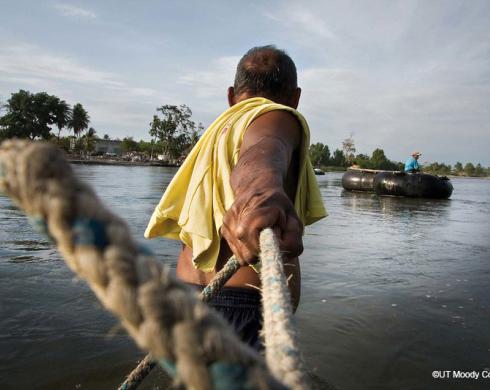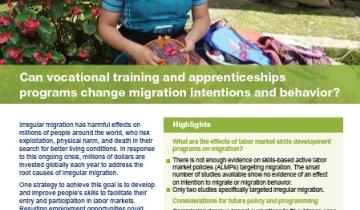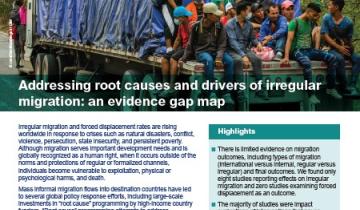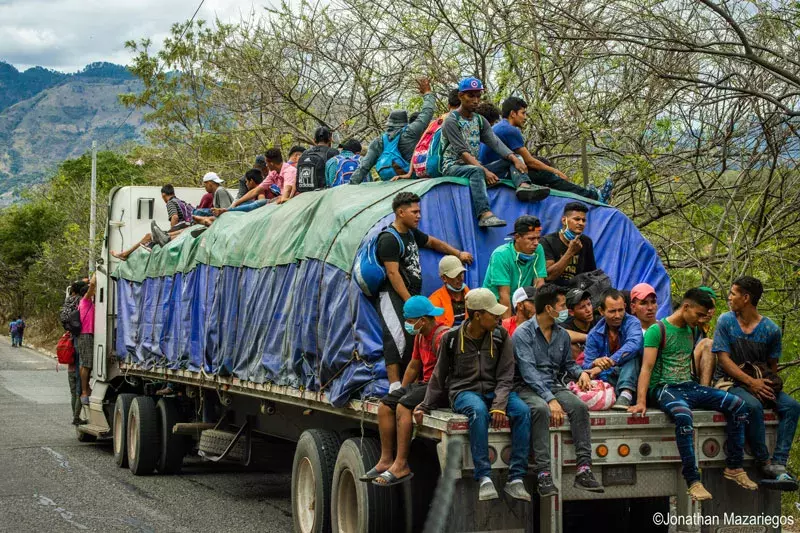Mapping Evidence to Address Root Causes and Drivers of Irregular Migration
Irregular migration continues to rise, often leading to tragic outcomes. While interventions seeking to address its root causes have grown, the evidence of their effectiveness is very limited. Research analyzing existing evidence is also limited, leaving critical gaps in understanding effective interventions and areas that need further study. To address some of these gaps, 3ie’s research — supported by USAID and IOM — is focusing on irregular migration programming in Guatemala and informing global policymaking.

Overview
3ie, under a subgrant from IOM-Guatemala and USAID, is conducting research to address the root causes of irregular migration in Guatemala. This work aims to provide evidence to help Guatemalans build prosperous, secure, and dignified lives in their communities. The research focuses on mapping available evidence on effective programs and synthesizing findings in key areas to guide policymakers and practitioners.
Mapping the evidence
Using systematic search strategies, 3ie developed an evidence gap map (EGM) and targeted synthesis study that were published in December 2023. This research identifies the root causes and drivers of irregular migration, the interventions addressing them, and their effectiveness.
The study adopted an equity-sensitive approach, coding research by population to highlight studies on specific ethnicities and minority groups. The EGM will allow users to filter studies by equity dimensions.
Evidence gap map and report
This EGM addresses the root causes of irregular migration in Guatemala and systematically examines the effects of interventions tackling irregular migration in low- and middle-income countries.
The EGM focuses on interventions addressing key root causes of irregular migration, including:
- Lack of economic opportunities
- Limited capacity to adapt to shocks or stressors
- High levels of violence in origin countries
- Limited regular migration channels or lack of awareness about them in destination countries
The map includes impact evaluations and systematic reviews that assess migration behavior and intermediate outcomes, such as aspirations, intentions, and perceptions. While qualitative research and local knowledge were not included, they remain critical for contextualizing findings.
The EGM addresses three key research questions:
- What is the extent and nature of empirical evidence on interventions addressing root causes of irregular migration?
- Where are the major gaps in primary and synthesis evidence?
- Which intervention and outcome areas should be prioritized for future research or evidence synthesis?
This comprehensive map and accompanying report provide a valuable starting point for exploring existing literature, identifying evidence gaps, and guiding policymakers and practitioners in their efforts to address irregular migration effectively.
Evidence Gap Map | Evidence Gap Map Report | Evidence Gap Map Brief
Synthesis evidence
We produced a mixed-methods systematic review (SR) of one of the largest clusters of evidence identified in the EGM—skills-based active labor market policy interventions (i.e., vocational training and apprenticeship programs). The synthesis pooled the results of 10 impact evaluations (all randomized control trials) and ran random effects meta-analyses. We also supplemented quantitative findings by searching for qualitative research on the same programs.








